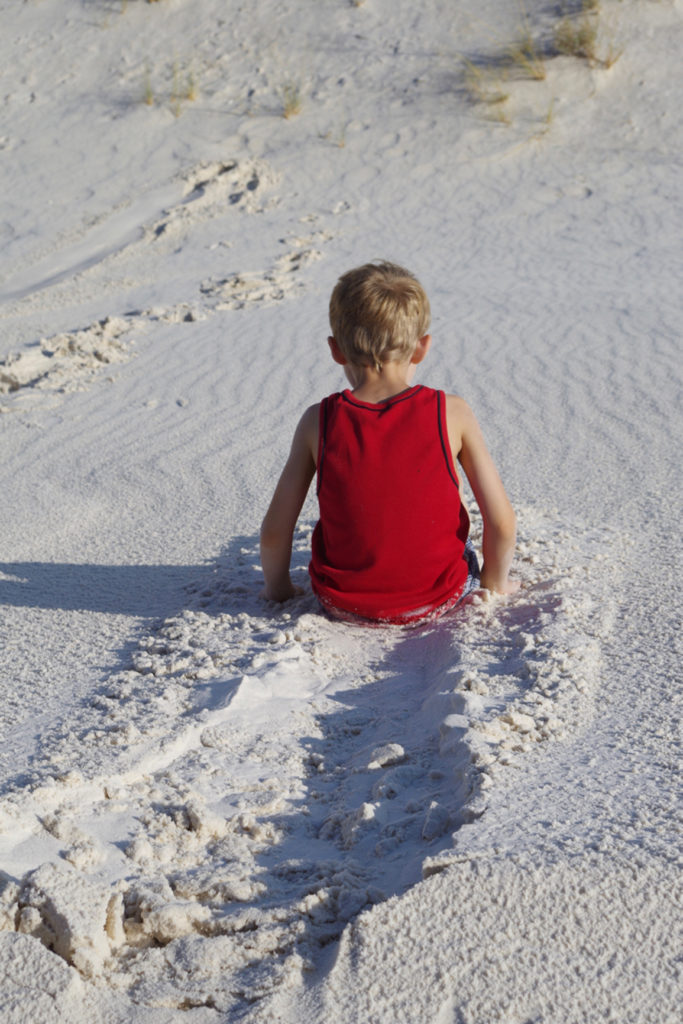
Sliding down the dunes at White Sands
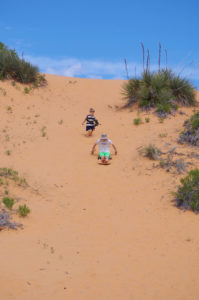
Sledding at Coral Pink Sand Dunes
This May, while on a family vacation with the grandparents, we took the boys to the Coral Pink Sand Dunes State Park in Utah. We live in the Midwest, and don’t see a lot of sand dunes, not to mention the ocean. I have some really good memories from when I was growing up and went camping in the sand dunes, so I thought it would be fun for the boys to visit some. It turned out to be amazing! It wasn’t too hot, and we rented a wooden sand board for dune sledding. That was enough to occupy the boys for hours. In fact, the adults were all ready to go before the kids were done.
It was an interesting learning experience for us all, finding out about the geology of the place and why sand dunes were in the middle of the mountains, and about the tracks left by little lizards and beetles, and how playing in sand is different from the dirt at home. We learned other important lessons, such as if you somersault down the dunes and bury yourself in them you will get sand inside your clothes where it’s not very comfortable, and that sand will stick to sunscreen. The finer the particles of sand, the more it will stick!
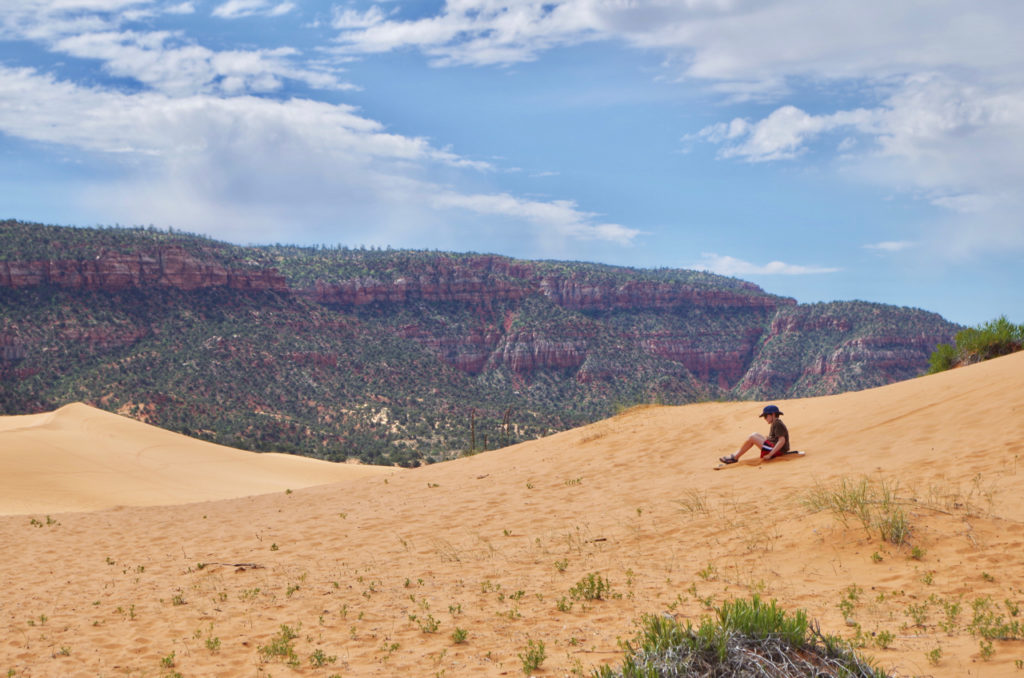
A slow ride at Coral Pink Sand Dunes
The boys were having so much fun I wanted them to have more time in the sand. There were a couple of young ladies there who showed the boys how to wax their board. One of them used to live in Colorado, and highly recommended visiting the Great Sand Dunes National Monument. It had been written up recently in our National Parks magazine and is much bigger, with very high dunes, so I thought it would be fun to work that into our next trip.
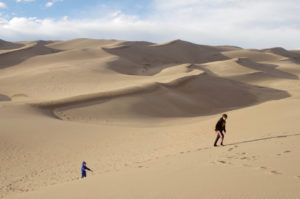
Great Sand Dunes National Monument
That trip came this fall, with my mother joining us. Our plan was to camp through Colorado and New Mexico, although weather and timing thwarted many of our camping days. Our first stop after seeing friends in Denver was the Great Sand Dunes. This turned out to be a very different experience, and a very different kind of area.
The wind there is nearly constant, at least on the side with easy access. Our middle boy lay down to make a sand angel and jumped right back up because the blowing sand was so abrasive it hurt. The park is also at around 8,000 feet above sea level, and none of us were used to the altitude. There is a very long, flat plain with a very shallow river to cross before you get to the dunes, and all of us were out of breath and glad not to be lugging a heavy sand board all that way like some of the other visitors. The boys ran around on the first couple of smaller dunes for about ten minutes, and then they were all done. It was too cold and windy, and we were all starting to get headaches from too much exertion at that altitude. This was not the sand dune experience I was hoping for.
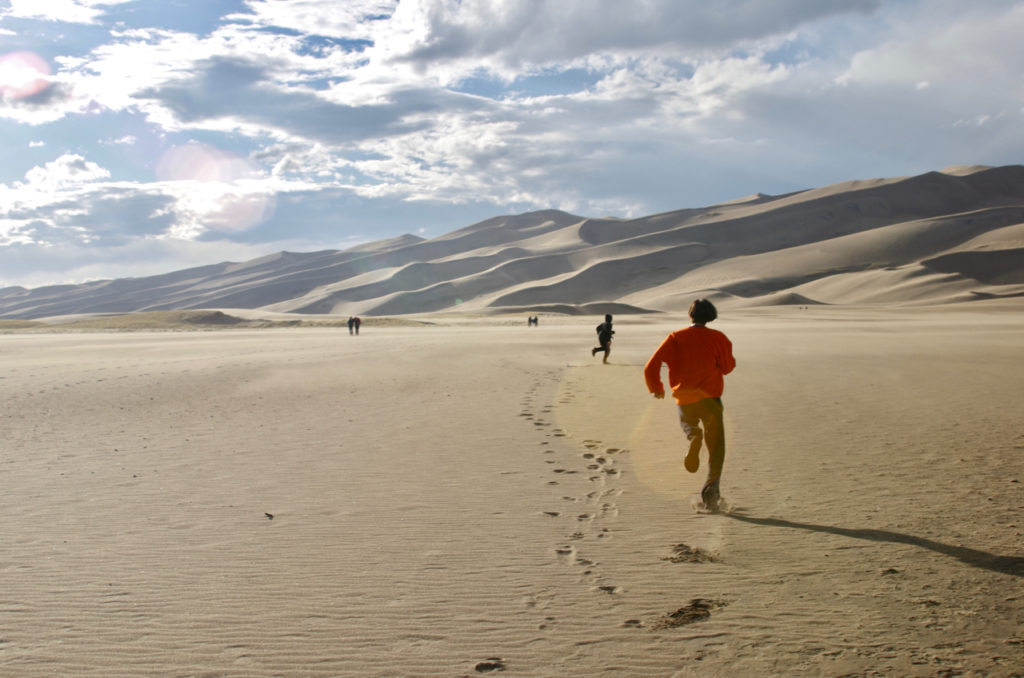
Running across the sand flats at Great Sand Dunes
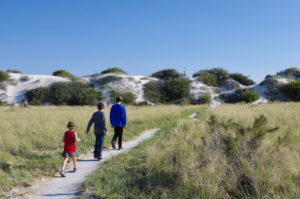
Hiking at White Sands National Monument
That night we rented a camping cabin instead of putting up the tent, and I was very thankful we did. It blew like crazy for hours and probably would have knocked the tent over. Then the storm came and poured rain until dawn. After breakfast we discussed what to do, and took a vote. Nobody wanted to stay all day and play on the cold, wet, windy sand. Because of our intention to camp, I hadn’t made hotel reservations except for our stay in Albuquerque, so we could be flexible. Instead, when we made our way down to southern New Mexico, we would take the extra day at White Sands National Monument. We spent the morning learning more about the dunes and the history of the area at the visitor center, and headed out.
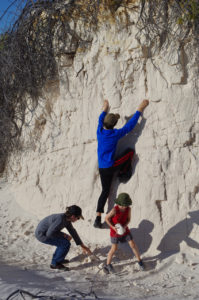
Hillocks of sand at White Sands
Going to White Sands turned out to be an awesome choice, and everyone had a wonderful time. It was ninety degrees when we got there late in the day, and we took refuge in the visitor center. They had a great display about the gypsum sands there, which are very different from other kinds of sand. The plants adapt to the sand in different ways, and some grow deep roots which then anchor the sand when the rest of the dune drifts on. It makes for some very interesting hillocks. The animals also adapt, and many of them have become white over the generations. We hoped to see a white lizard, but they were very well camouflaged.
We went for a short hike and checked out the hillocks, but it was still very hot. There weren’t any car camping areas there, so we rented some sleds for the morning and went back into town. The next morning everyone was up bright and early, and we were back at the dunes by 8am. It was a balmy seventy degrees, and a light rainstorm the night before had packed the sand so it wasn’t blowing everywhere. The sleds here were plastic discs in bright colors, so they were easy to carry, easy to find, and much less expensive. (Technically, we bought the sleds, and the park bought them back afterwards.)
The boys sledded, climbed, dug, rolled, and had a grand time. The area was beautiful, and we only saw two other people the whole time we were there. It was a great experience. We learned something very important, too. You are NOT supposed to dig in these dunes! Because of the kind of sand, and maybe it holds true for other kinds as well, the danger of collapse and suffocation is high. Burying people in the sand is not safe here, don’t do it. Fortunately, we learned that by reading the safety pamphlet they give out at the entrance, and not by personal experience. But I definitely felt like a bad mom for letting them dig in the sand without reading the safety pamphlet closely.
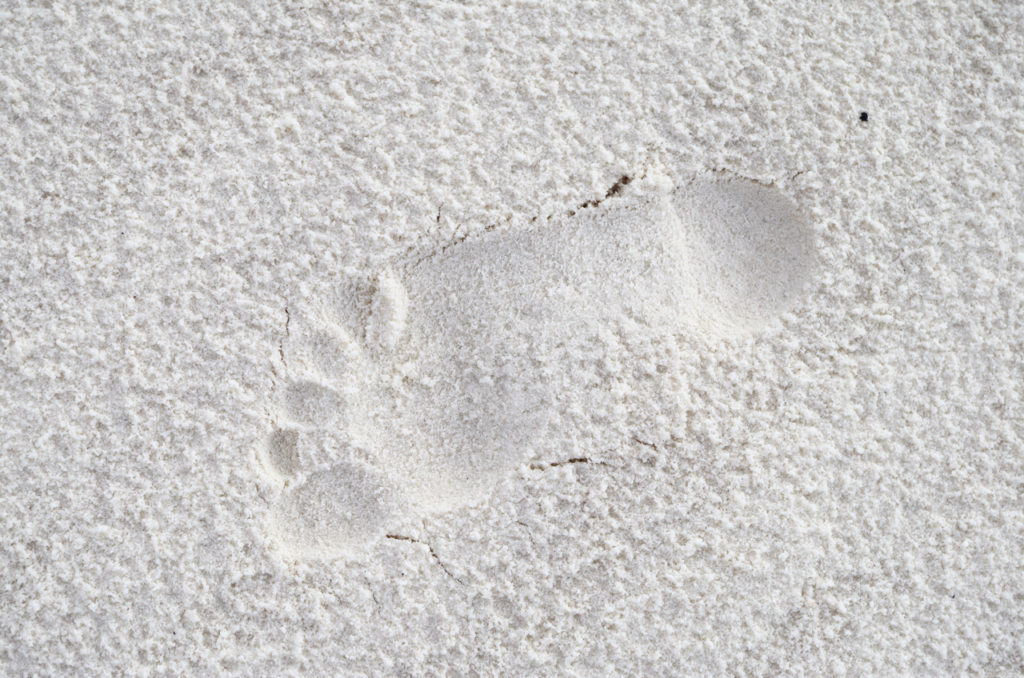
Footprint at White Sands
To me, this sand dune odyssey is everything that is right about homeschooling. I can try to list the things I think they have learned from it, but it would be pretty superficial, and I can’t be sure of what will stick with them. No doubt some of the things I thought were interesting won’t even be remembered, and they will remember things that didn’t make an impression on me. What I am sure of is that they know sand, and how sand is different in different areas, and what it feels like to sink your hands in the sand, and be buried in sand, and try to hike through deep sand. They have a sense of sand that will stick with them and inform them in the future. That’s real world learning.
Leave a Reply